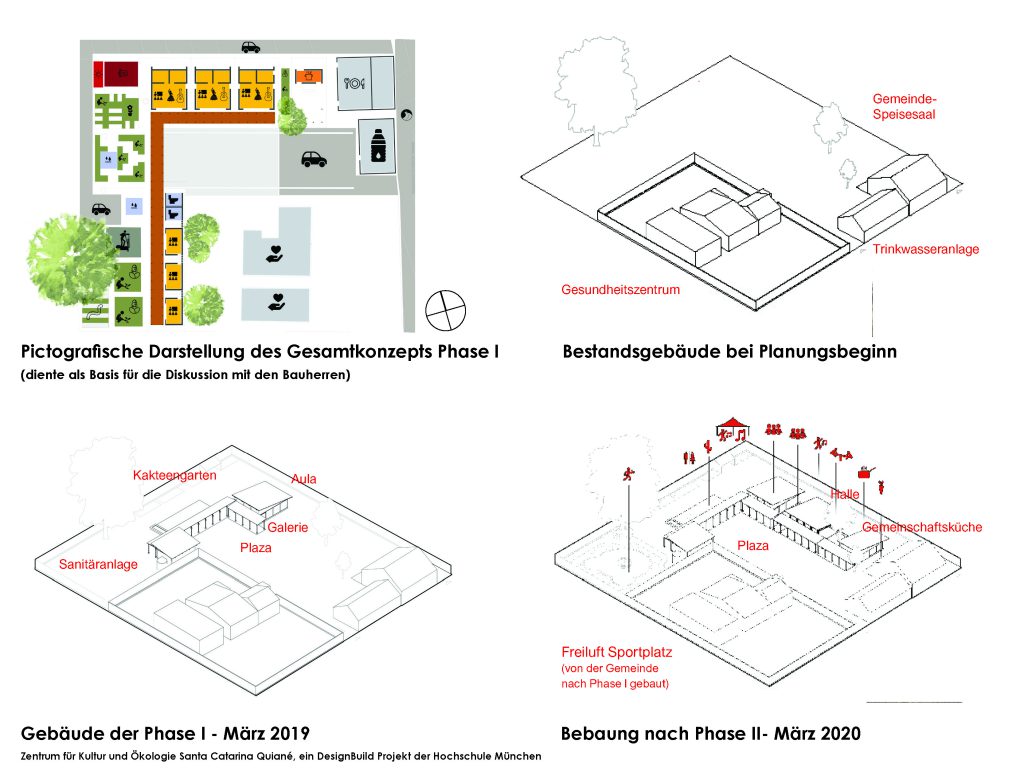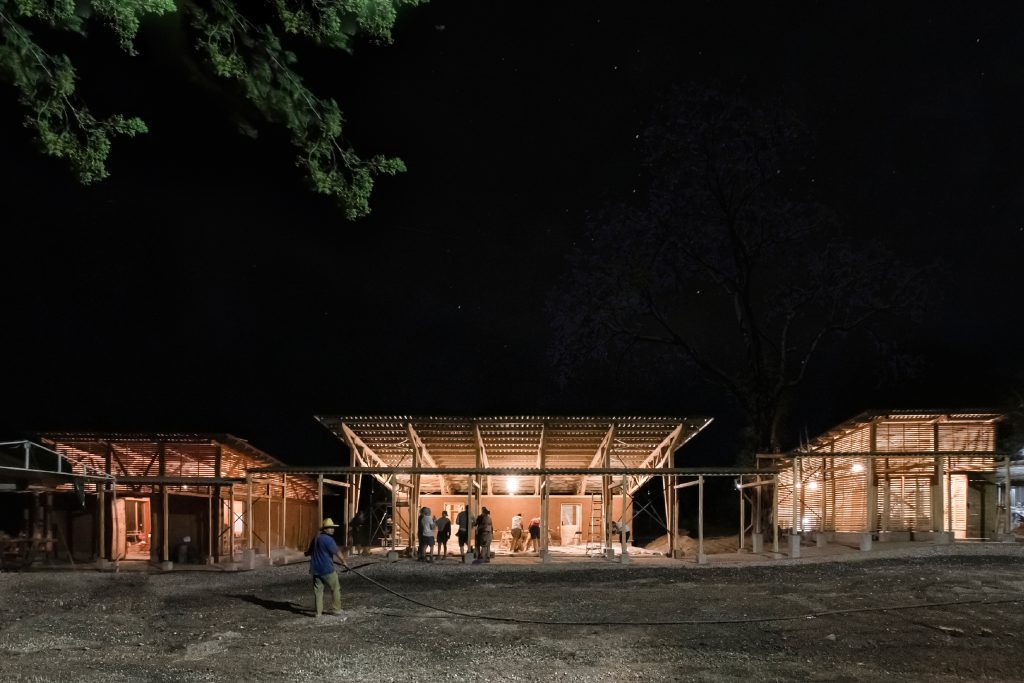DesignBuild Center for Culture and Ecology Quiané II, 2020
the second phase of the DesignBuild Project of Munich University of Applied Sciences
Location: Santa Catrarina Quiané, Oaxaca, México
Year: 2019/2020
The municipality of Santa Catarina Quiané and the local organisation for the defense of land rights decided to build a center for culture and ecology to demonstrate their self-determination and self-esteem as a rural community and to strengthen their cultural identity, related to land-use and landscape, appreciating precolonial customs. The municipality provided a building plot. The Oaxaquenian cooperation-partner CAMPO a.c. supported the community in the development of this project. A first plaing and buildin-fase was implemented in 2018-2019 Quiané Centre for Cultre and Ecology, providing an auditorium, a sanitation unit and a galery.
Based upon this first phase and a dialog with the local stakeholders, the next construction phase started in October 2019 a new group of students of architecture and civil engineering at the Munich University of Applied Sciences designed and planed further buildings in coordination with the community and the local NGO CAMPO a.c., taking into account the existing buildings and the spatial concept of the master plan of phase 1. A large covered hall and the urgently needed rebuilding of the kitchen was executed in February 2020.
The need of the community was to get a place where divers cultural activities as dance, music, artesanias and gastronomy can happen but as well were ecological and sustainable agriculture-techniques can be studied and implemented.

Planning and building phases
In the second phase, the gallery was completed, an open hall with a backstage facility and the community kitchen was build.
Every day a family cooks about 80 meals for 20 families. The existing kitchen is a roofed open fireplace run with wood, It is a health hazard for the cooks and the children as there is no smoke outlet. Cooking (the Mexican kitchen has the status of an immaterial world cultural heritage) is the union of culture and nature, the material that is produced from nature is transformed and converted into a cultural asset. The new cuisine thus becomes the symbol of the Center for Culture and Ecology.
For the students, the project offers the opportunity to test their previously purely academic strategies in and against reality.
more information on https://www.dbxchange.eu/node/1617
Awards:
2020 – D.A.M. Prize: nomination in the category foreign projects
2020 – Fritz Höger Backsteinpreis: Winner Special Mention in the category: public buildings, sports and leisure
2020 – Bienal Panamericana de Architectura de Quito: Premio Mundial – finalist

Last nightshift
The predecessor project was erected as a sleeperless, modular timber-frame construction. The outer walls are filled with unfired clay bricks or window elements. In the region, massive clay block construction with 40 cm thick walls is typical, optimal for the semi-arid climate and the cold nights.
In the second phase the system was adapted with other constructions, based on the use of clay and wood, such as bajareque and lamella-filter infills..
A book, and an exhibition were the output of the students documentation in the summer-term.
Students: MUAS: Anne Braun, Maria José Chiriboga, Elena Eichinger, Madlen Felber, Miguel Fernandez, Kristina Franzl, Markus Gutmann, Marcus Hartel, Adrian Hoelzel, Sara Kayser, Dion Lins, M Mangas, Fabian Menz, Elisa Neubauer, Lukas Ostermeier, Ines Pinto, Janina Schuldt, M Schwarz, Andre Sedlmeir, Linda Völkner; Universidad La Salle Oaxaca: Ricardo Alberto Cruz Quintana, Rogelio Emmanuel Avendaño Ríos, Brenda Gasga Pérez, Estephany Montserrat Alvarado Cruz, Jesus Pedro Pérez Martínez, Soledad Villacaña Sosam, Rufino Bartolo Mendoza
Studio director: Prof. Ursula Hartig
Collaborators: Lorena Burbano, Sebastian Oviedo; Karl Wagner (craftsman); Paulina Ojeda (photographer)
Experts + support:Markus Dobmeier, Merlin Tichy, Suzan Cigirac, Markus Frühwein, Arthur Wolfrum (Verein Organisationsstelle der FK 01)
Civil Engineering: Prof. Jörg Jungwirth
Documentation: Dr. Hilde Strobl
Local cooperators: Community of Santa Catarina Quiané; Centro de Apoyo al Movimiento Popular Oaxaqueño (CAMPO):Cesar Morales Rodriguez, Eduardo Torres Navarrete + Team; University of La Salle, Oaxaca
Financial support+ donations: Hochschule München F01 + 02, ZUG II Projekt funded throught the BMBF, Rotary Club München Blutenburg, Hans-Sauer-Stiftung, STO-Stiftung, Tesdorpfsche Gemeinnützige Stiftung, Festool, Hultafors, Spax, Rothoblaas, Förg Zimmereibetrieb, Rote Sonne, Troublemakers Riot, private donations

